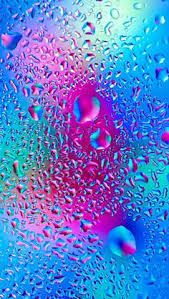
The Disturbing History Of Dentistry

The Disturbing History of Dentistry
No amount of stickers and praise could make you even slightly all right with going to the dentist when you're a kid, and it's even worse when you're an adult. It's more painful, you're paying for it, and for some reason, grown-up dentists don't hand out the stickers.
But honestly, we have it pretty good today. There are things like anesthetic, clean tools, Novocain, and even the most basic things like privacy. It wasn't always the case, and no matter how bad you might imagine dentistry was centuries ago, it was probably worse. Mankind has been having problems with teeth since they were walking upright and, well, since they had teeth, and according to the British Dental Association, it wasn't until 1878 that dentists needed to do things like register as a practicing dentist. It wasn't until 1921 they had to prove they had the skills to be a dentist, and that wasn't really long ago. Before that, any old schmuck with a hammer could knock your teeth out for you, and that's not a joke.
History is filled with people who have gone extra lengths to make sure that have a white smile, and if you think some of the products out there today taste bad, you would have hated earlier ones.
White teeth were incredibly important to the ancient Egyptians, especially those high on the social ladder. The Canadian Academy of Dental Hygiene says they used a paste made from white vinegar and ground pumice, and they'd smear it on their teeth with the frayed end of a stick. At around the same time in ancient Rome, they were using something even worse: human urine. The weird thing is, it probably worked due to the high ammonia content.
It can't get worse than that, right? Arguably, it can. In the 17th century, there was a major advancement in teeth-whitening. Barbers (yes, barbers) could be asked to take a metal file to the surface of the teeth, which would then be treated with nitric acid. It wasn't until the 19th century that we discovered hydrogen peroxide could do pretty much the same thing, without the gross or the pain.
Today, the biggest challenges you face in the toothpaste aisle are remembering who needs the sensitive stuff and trying to remember if you like spearmint or peppermint better. (And should you gamble on the orange flavor? Hmmm.) Commercial toothpastes are a relatively recent invention, and Colgate was the first on the market in 1873. According to the Telegraph, there were plenty of other options out there before, and they were just as gross as you'd expect.
One of the oldest recipes comes from fourth-century Egypt. The recipe was preserved on a piece of papyrus and called for a mix of rock salt, mint, pepper, and dried iris flower. One Austrian dentist actually tried it, and said even though it made his gums bleed, it wasn't as bad as some of the other toothpaste formulas he'd seen.
So, what were in those? Colgate has put together a history of toothpaste and says ancient ingredients - which were usually mixed up into a paste and sometimes applied with a "toothbrush" like the one shown above - included things like pumice, burnt eggshells, ashes from the hooves of oxen, crushed oyster shells, and crushed bones. It stayed that way until things started changing in the 1800s, with the use of soap, charcoal, chalk, and betel nuts. Orange sounds great now, doesn't it?
We're sorry, the questions for this article are not ready yet. Check back soon.
